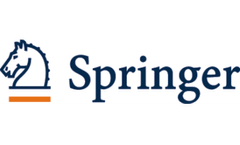Soybean Rotation Articles & Analysis
19 articles found
The present study investigated the fate and toxicity of clothianidin applied every other year as a corn seed‐coating at two different rates, i.e., 0.25 and 0.50 mg/seed, in an agricultural field undergoing a corn‐soybean annual rotation, and conservation tillage. Concentrations were measured in soil, surface runoff, infiltration, and ground water from 2011 to ...
The objective of this research was to quantify the nutritive value of forages from different plant functional groups managed as living mulches in 2 of 3 yr and as a forage crop in the third year of this 3-yr corn (Zea mays L.)-soybean [Glycine max (L.) Merr.]-forage rotation. Alfalfa (Medicago sativa L.), Kura clover (Trifolium ambiguum M. ...
Today, there is no information on the effectiveness of using DPS to control weeds within a soybean [Glycine max (L.) Merr.]-corn (Zea mays L.) rotation. The objective of this study was to determine the effects of 0, 25, or 50 Mg/ha DPS applied yearly, combined with the absence or the presence of herbicides, on weed abundance and biomass. ...
Alfalfa (Medicago sativa L.), kura clover (Trifolium ambiguum Bieb.), and birdsfoot trefoil (Lotus corniculatus L.) were evaluated in sole seedings, binary mixtures, and reed canarygrass (Phalaris arundinacea L.) and orchardgrass (Dactylis glomerata L.) were included in three-way mixtures in a corn (Zea mays L.)–soybean [Glycine max (L.) Merr.]–forage rotation. ...
By using maize fertilizer recovery and soybean N2 fixation to estimate total grain N derived from soil, we calculated the explicit change in soil N storage each year. Overall, fertilizer N and soybean N2 fixation dominated inputs, and total grain export dominated outputs. ...
Objectives were to determine how maize (Zea mays L.) would respond to monoculture (C-C), 2-yr rotation (C-S) with soybean [Glycine max (L.) Merr.], or 4-yr rotation (C-S-W/A-A) with soybean, wheat (Triticum aestivum L.), and alfalfa (Medicago sativa L.) under different N input levels. ...
Genetically-modified (GM) corn (Zea mays L.) and soybean [Glycine max (L.) Merr.] dominate the North American agricultural landscape and are becoming increasingly important as biofuels. However, as herbicide-tolerance and insecticidal traits are often simultaneously expressed by individual plants, glyphosate [N-(phosphonomethyl) glycine]-resistant (GR) volunteer corn is becoming ...
The objective of this research was to determine the effect of cover crops, manure, and compost on short-term C sequestration rates and net global warming potential (GWP) in a corn–soybean [Glycine max (L.) Merr.] rotation with complete corn stover removal. Field experiments consisting of a corn–soybean–corn rotation with ...
Experiments were conducted under rainfed corn (Zea mays L.) or sorghum [Sorghum bicolor (L.) Moench] rotated with soybean [Glycine max (L.) Merr.] in eastern Nebraska with one-time moldboard plow (MP) and mini-moldboard plow (mini-MP) tillage compared with continuous NT. ...
The compared situations were no-till corn–soybean rotations including either winter fallowing (C/S) or cover crops of rye (Secale cereale; C-R/S-R), hairy vetch (Vicia villosa; C-R/S-V), or their mixture (C-R/S-VR). ...
By using maize fertilizer recovery and soybean N2 fixation to estimate total grain N derived from soil, we calculated the explicit change in soil N storage each year. Overall, fertilizer N and soybean N2 fixation dominated inputs, and total grain export dominated outputs. ...
The three nutrient sources were (i) mill mud (filter cake, cachaza), (ii) local standard fertilizer, and (iii) soybean cropping system before sugarcane. Soybean green manure increased sucrose yield (TSH, t sucrose ha–1) 20% in plant cane, however when aboveground biomass was removed soybean rotation did not improve sugarcane ...
The five FSP cropping systems include a conventional no-till corn–soybean–wheat/soybean rotation (NT), a conventional chisel-till corn–soybean–wheat/soybean rotation (CT), a 2-yr organic corn–soybean rotation (Org2), a 3-yr organic ...
Winter rye (Secale cereale L.), wheat (Triticum aestivum L.), and triticale (x Triticosecale Wittmack) were used to develop self-seeding cover crop systems in a soybean [Glycine max (L.) Merr.]–corn (Zea mays L.) rotation. Cereals were planted and managed chemically and mechanically in varying configurations. ...
Winter rye (Secale cereale L.), wheat (Triticum aestivum L.), and triticale (x Triticosecale Wittmack) were used to develop self-seeding cover crop systems in a soybean [Glycine max (L.) Merr.]–corn (Zea mays L.) rotation. Cereal cover crops were planted in varying row spacing configurations and managed chemically and mechanically to achieve different levels of ...
Within each tillage four N rates (0, 85, 170, and 250 kg N ha–1) were assigned as subplots for each N source of manure (total N) and fertilizer (anhydrous ammonia) in a corn-soybean [Glycine max (L.) Merr.] rotation. Tillage and increase in N rate beyond 85 kg ha–1 had no effect on corn grain yield with both N sources. ...
When grain harvests were subtracted from NEP to calculate NBP, both the modeled and measured maize–soybean rotations became net C sources of 40 to 80 g C m–2 yr–1 during 2002 and 2003. Long-term model runs (100 yr) under repeated 2001–2004 weather sequences indicated that a rainfed no-till maize–soybean rotation at Mead would ...
This study examined crop yields, input costs, and economic returns during the transition to a range of cropping system alternatives in the northern Corn Belt region, including different system (organic, conventional), tillage (conventional, strip-tillage), rotation (corn–soybean, corn–soybean–wheat/alfalfa–alfalfa) [Zea mays L., Glycine max (L.) ...
Fertilizer N was applied as 15N-labeled ammonium sulfate to corn (in a corn/soybean rotation) sown under zero tillage in filled-in lysimeters containing two soils of different texture representative of the Pampean region (52 and 78 kg N ha-1, added to the silt loam and sandy loam soil, respectively). ...



